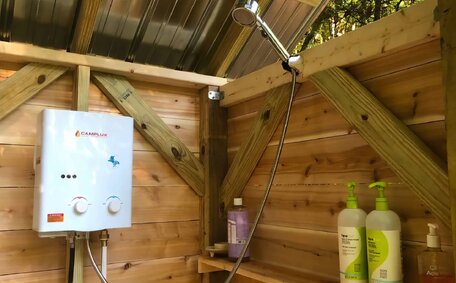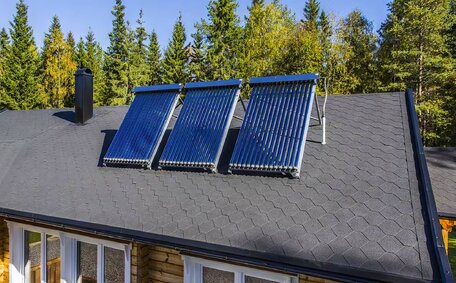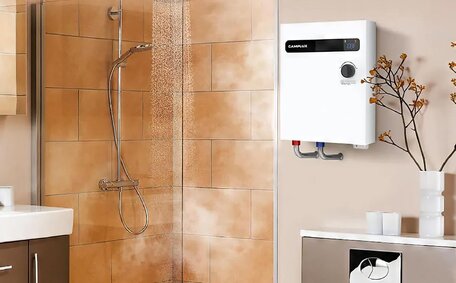How Soil and Sediment Enter and Impact Drains
Soil and sediment can infiltrate drainage systems through various pathways, often exacerbated by environmental factors. Key ways soil and sediment can also enter pipes include:
- Soil erosion when rains are heavy - Heavy runoff can result in valuable topsoil being washed into underground drainage systems
- Construction activities - Disturbed and exposed soils are vulnerable to being carried away by water flow into drainage pipes
- Urbanisation - Paved surfaces hinder natural water absorption, increasing runoff
Fine sediment and clay particles easily infiltrate pipes, causing multiple drainage system issues:
- Blocked drain pipes and water backups
- Corrosion and pipe damage over time
- Flooding risks
- Poor water quality discharge
Cranebrook’s unique terrain, featuring highly erosive soils, often leads to prevalent sediment-related drainage complications. Mitigation efforts like capture systems and hydroseeding on slopes are effective in preventing blockages.
Key Sources of Soil and Sediment Buildup in Drains
There are several key sources that contribute to soil and sediment accumulation in drains:
- Construction sites - Exposed soil easily erodes, with water transporting it into drainage infrastructure. Inadequate site controls increase runoff and sedimentation.
- Urban street dust and debris - Vehicle emissions, wear and tear, litter, and organic matter collecting on impervious surfaces readily wash into drains.
- Land and soil erosion - Water runoff, especially during heavy rains, washes away nutrient-rich topsoil into drainage systems.
- Deteriorating drain infrastructure - Cracks and faults in ageing drainage pipes allow soil and debris ingress over time.
- Septic systems and wastewater - Poorly maintained systems can leak solids into pipe infrastructure, and waterways can become contaminated.
- Agricultural runoff – Unprotected pastoral lands contribute nutrients, chemicals, and sediments that can be easily washed away during storms, polluting rivers and drains.
- Industrial pollution sources - Commercial sites often produce heavy metals and toxic substances that can mix with soil to block urban drains.
Consequences of Sediment Buildup for Drainage Systems
Sediment buildup detrimentally affects drainage systems through various mechanisms:
- Blocked drain pipes and reduced flow - Sediment accumulation narrows pipes, slowing water movement and potentially causing backups.
- Flooding - Blockages force water to find alternate escape routes, which can mean overflowing drains and localised flooding.
- Pipe and infrastructure damage - Sediments wear down piping and plant roots can invade and fracture drains.
- Poor water quality - Sediment pollution introduces bacteria, chemicals and litter into waterways, harming ecosystems.
- Increased turbidity - Clays and silts stirred up by flowing water reduce clarity and sunlight penetration in water bodies.
- Toxic algal blooms - Excess nutrients from sediment fertilise algae growth, which poisons aquatic life when decomposing.
Regular drain maintenance and sediment capture strategies are essential to prevent accumulation. Ignoring sediment accumulation can severely disrupt drainage function and ecological health.
Signs Your Drain is Clogged by Soil or Sediment
Key indicators of soil and sediment clogs in your drains include:
- Water taking an extended time to drain
- Gurgling sounds from drains
- Visible soil deposits near drain openings
- Excess water gathering around yard drains
- Water accumulating in sinks or showers
- An overflowing rainwater tank in dry weather
- Sewer gas smells from blocked drains
- Water overflowing from gully traps during rains
- Soil staining around entry points to your drainage system
Removing soil and debris from a home’s drainage network can prove challenging. If clogging signs persist it is best to contact a professional plumbing service to avoid potential flooding, pipe damage and poor water quality discharge issues.
Methods to Clear Soil and Sediment from Drains
Several methods can effectively clear soil and sediment buildup from drains:
- Manual cleaning - Physically scooping out debris with shovels or rodding pipes to dislodge blockages.
- Pressure jetting – Uses high-pressure water streams to displace stubborn sediment.
- Chemical drain cleaners - Caustic solutions dissolve some organic materials, but with environmental impacts.
- Enzymatic drain cleaners - Safer bacteria-based cleaners break down debris to restore flow.
- Silt capture solutions - Installing mesh screens or bags in drains traps particles for easier removal.
Though manual methods are more affordable, pressure jetting by qualified technicians guarantees the thorough removal of sediment, roots, and scale without risking pipe damage.
Installing silt bags proactively traps eroded soil, preventing blockages downstream.
Proactive Measures to Prevent Soil and Sediment Entry
There are several effective steps households and businesses can implement to stop soil and sediment entering drainage systems:
- Erosion control barriers - Install silt fences or hay bales to contain sediment runoff from exposed areas.
- Landscaping practices - Plant native vegetation on slopes or bare ground to stabilise and absorb water. Employ rain gardens or bioswales to absorb runoff.
- Water diversion methods - Use berms, drainage channels and rainwater tanks to redirect runoff away from drains and retain nutrients onsite.
- Street sweeping programmes - Coordinate with councils to schedule regular cleaning of sediment and debris from streets and gutters.
- Public awareness initiatives - Promote awareness of sediment pollution and how individual actions can prevent it, like avoiding litter, maintaining septic tanks and stabilising construction sites.
- Protect existing vegetation - Preserve established trees, shrubs and groundcover to maintain water-absorbing topsoil and prevent erosion.
- Drain maintenance - Inspect and routinely clean drains to remove accumulated particles before major blockages occur.
- Mesh drain guards - Fine screens over drain grates trap debris but allow water flow, avoiding pipe clogging.
With careful planning, regular maintenance, and conservation of nutrient-rich topsoils onsite, we can substantially reduce soil erosion into urban infrastructures. It is crucial to prevent sediment mobilisation from the outset to maintain drainage system efficiency and protect environmental integrity.
When to Call a Professional for Drainage Issues
Calling a professional plumber is advised if you experience ongoing drainage issues or failures in preventative measures:
- Constant drain blockages or rainwater tanks that frequently overflow
- Foul sewage odours signalling pipe damage
- Yard flooding not alleviated by debris clearing
- Silt screens full and requiring frequent maintenance
- Large volumes of soil and sediment needing removal
- Complex pipe layouts not fully cleared by homeowners
- Poor water quality discharges persisting post cleaning attempts
Contact Cranebrook Plumbing at 1300 349 338 or [email protected] for expert pressure jetting, pipe repairs or comprehensive drain rehabilitation. Leveraging our extensive local expertise, we can precisely evaluate your drainage issues and apply suitable solutions.






